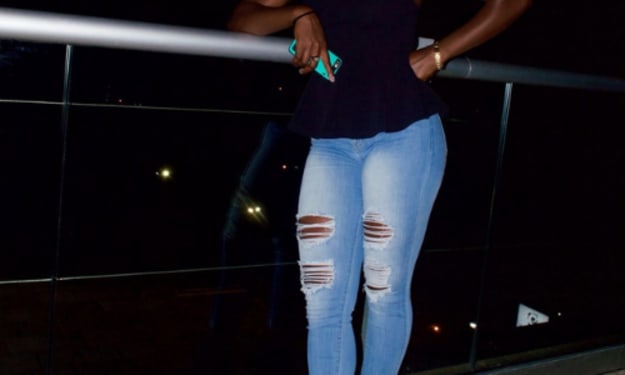
“Competition between women has been made part of the beauty myth so that women will be divided from one another”—Naomi Wolfe, Beauty Myth (p.14).
No woman buys the most expensive pair of stilettos to impress men. We shop to compete amongst ourselves. Seldom have I heard a man look at a woman’s shoes, purse, or dress and compliments her based on the style. We get pretty for the sake of competing against each other, contrary to the idea of trying to attract the male gaze. The beauty myth teaches us that we need to compete against each other. Per the myth, the beauty of the woman next to us negates our own beauty.
Men do not care about the makeup we wear; men have no idea what contouring does; men don’t know the difference between a pair of stilettos and a pair of block-heeled shoes. Therefore, the only reason that women go crazy for these things is because of the intra-competition that exists among us. The beauty myth propagates that we need to compare ourselves to the women in the magazine and aspire to be her because she is beautiful. To be beautiful, we have to look like she does and have what she has. This comparison transcends the magazines and seeps into reality.
When I was 16, I tried to wear makeup for the first time, but my mother told me that I didn’t need it. Even though my mother told me that I was beautiful without wearing eyeliner, I decided that I was going to wear it anyway. My classmates and friends were all wearing makeup. Not just eyeliner—they were wearing full coverage makeup. Their faces always looked fresher. Their complexion always seemed brighter and their eyes always seemed bolder. I figured that I wanted to be on that playing field. My thought, I remember, was that these girls were not prettier than me. But the makeup gives that an extra oomph. I wanted that oomph. Yes, I was comparing myself. The beauty of my peers made me feel less beautiful.
As a teenager, I was always comparing myself to other girls. I needed to be on the same level or better than they were. By the time I got to college, I had a makeup kit. This kit was underwhelming compared to my peers’, but it was satisfactory. I had learned how to apply foundation, eye shadow, blush, and mascara because the foundation evened my skin tone and the eye shadow and mascara made my eyes seem brighter. These small accentuations were all that I wanted.
It was not until I got to my junior year in college that I realized just how severe the competition was among the women and how oblivious the men were to it. Katie—my best friend—and I were at her apartment preparing for a night out. We had discussed what time we needed to leave her apartment. About an hour and a half in advance, Katie began to get ready. Katie was my first real girl-friend in college, so this was unchartered territory for me. I asked her, “Girl, what ya doing? We still have an hour and a half.”
“I have to put on my make-up and do my hair,” was her response. She laughed me off, but I was in a bit of shock. I grew up with mostly brothers and a mother who didn’t really wear makeup. What I knew about makeup was self-taught and based on YouTube videos. My knowledge was basic. I had always seen the movies and heard about how long women take to get ready, but never had a real experience with a woman taking more than an hour to get ready. I wrote off the movies as exaggerations. I can get ready in 30 minutes, makeup and everything. This, however, was not applicable to Katie.
I watched her as she meticulously applied her make-up. Her process includes primer, highlighter, concealer, blush, foundation, finishing spray, mascara, eyeliner, eyeshadow, lipstick, lip liner, not in that particular order. Katie’s makeup takes about 30 minutes. And then, sorting through her closet abundantly stocked with clothes took another 30 minutes. The last 30 minutes she took to do her hair and walked around in circles making small changes to her outfit. We were still late.
Katie buys the most expensive items of clothing. Not for the sake of impressing any guy, but for the sake of being fashionable. When we finally got to our destination, Katie got a lot of compliments on her makeup and outfit. None of them were from men. The fashion industry doesn’t teach women to dress to appeal to men, but creates the binary of fashionable versus unfashionable—a competition among women.
I fell prey to the beauty myth, but I am not as much a victim as Katie is. Katie is a White, middle-class European woman. According to Naomi Wolfe, the only person more targeted by the beauty myth than Katie is the white, middle-class American woman. The fashion and cosmetic industry was and still is largely targeted at the middle-class White woman. Not only are these industries teaching her that she is not pretty enough, the industries are telling her that more clothes and more cosmetics will make her prettier.
About the Creator
Kellion K
Lover of writing and expression. Lover of people, life, and living.
Stories are opportunities to travel through space and time. Storytelling is our superpower.
Follow me on Twitter: @callme_kelli






Comments
There are no comments for this story
Be the first to respond and start the conversation.